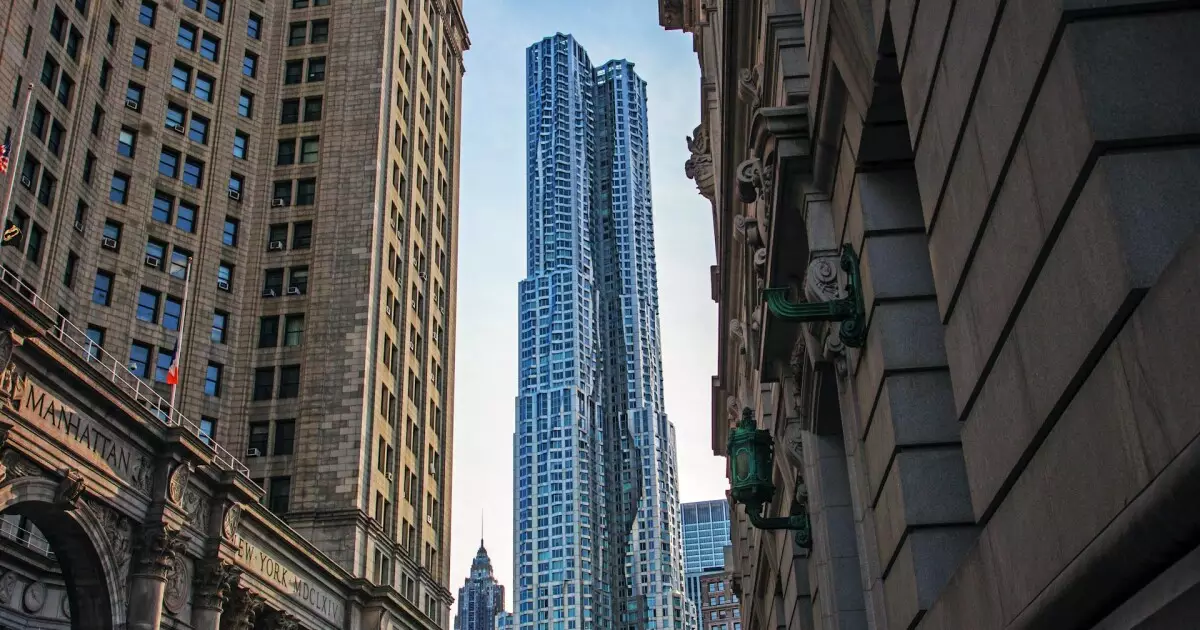The Financial Renaissance of 8 Spruce Street: Blackstone’s Strategic Refinancing Move

The Manhattan skyline is a testament to architectural ingenuity and financial ambition. One of its most striking landmarks, 8 Spruce Street, stands out not only for its unique design but also for the financial maneuvers that surround its management. Blackstone Inc., a titan in the investment landscape, recently embarked on a substantial refinancing of $550 million in municipal debt linked to this 76-story residential marvel, designed by the acclaimed architect Frank Gehry. This article delves into the layers of Blackstone’s refinancing strategy, the historical context of the building, and its implications for the broader Manhattan real estate market.
On a pivotal Tuesday, New York City’s Housing Development Corp. priced $550 million in municipal debt for Blackstone, which acquired the property for $930 million from Brookfield Asset Management and Nuveen LLC in 2022. This financial decision serves dual purposes: to optimize the capital structure of the property and take advantage of favorable financing conditions. The refinancing package includes approximately $204 million of tax-exempt bonds issued under the Liberty Bond program, originally designed to stimulate recovery in lower Manhattan following the tragic events of September 11, 2001. Such financial frameworks showcase how municipal strategies intertwine with commercial interests to fortify urban landscapes.
The Liberty Bond initiative, rooted in a broader federal economic recovery package, has played a critical role in the urban renewal narrative post-9/11. With an $8 billion allocation aimed at transforming lower Manhattan, this program catalyzed notable projects, including the reconstruction of the World Trade Center site by developer Larry Silverstein. By leveraging such programs, Blackstone not only secures an advantageous financing position but also aligns itself with a legacy of economic support designed to rejuvenate New York City’s downtown core. Meanwhile, as Bank of America leads this bond sale, it ensures that the process is embedded in the financial sector’s accessibility and strategic foresight.
8 Spruce Street, previously known as Beekman Tower, is not merely a residential building; it is a symbol of modern architectural design. Constructed by Forest City Ratner and officially opened in 2011, the tower boasts an 870-foot height and a distinctive rippled stainless steel and glass exterior. Designed to cater not just to luxury but to elevated living, it features amenities like an outdoor sundeck, a fitness center, an indoor pool, and a golf simulator.
The aesthetic appeal and high-quality offerings are reflected in its near-full occupancy rate of 97% as of August, paired with a striking average monthly rent of $6,015. The tower is home to 900 residential units, including two reserved for Gehry himself, highlighting the property’s intrinsic value. Moody’s appraisal of the building at $802 million signifies a robust investment rationale, particularly considering the building’s 20-year tax abatement.
The structured nature of the bond issuance represents an advanced approach to mortgage-backed security dynamics. NYC HDC’s decision to issue fixed-rate debt with multiple classifications introduces a sophisticated layer of financial engineering, where varying degrees of risk and payment priorities can appeal to a broader base of investors. The ratings assigned by Moody’s, which range from Aaa to Baa3, provide a lens through which to assess the risk profile and attractiveness of the investment.
The highest-rated segment, a $25.5 million Class D series with a Baa1 rating priced at par with a 4% coupon, depicts how institutional investors are being lured by the high demand for premium urban assets, further validating Blackstone’s refinancing strategy.
The refinancing of 8 Spruce Street encapsulates not only the currents shaping the contemporary real estate market in Manhattan but also highlights the increasing reliance on innovative financial frameworks to ensure sustainable growth. As urban centers continue to evolve, strategies like the Liberty Bond initiative and the refinancing efforts by firms such as Blackstone serve as blueprints for future developmental ventures. The saga of 8 Spruce Street, therefore, intertwines architecture with finance, showcasing the importance of visionary thinking in navigating the complexities of urban development.





